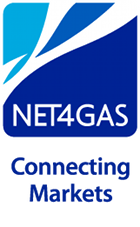
Pledge from the EHB initiative to establish hydrogen supply corridors by 2030 as enabler for hydrogen market creation
The European Hydrogen Backbone initiative and its members stand ready to deliver the hydrogen infrastructure needed to achieve Europe’s 2030 hydrogen targets. We ask for a clear mandate and the suitable policy and regulatory support for this.
We, as European Hydrogen Backbone initiative of 31 TSOs are willing and capable to deliver the hydrogen infrastructure required to meet the EC’s ambitious REPowerEU targets for 2030 and beyond. Hydrogen will play a key role in the decarbonization of Europe and the proposed infrastructure can enable an integration of hydrogen supply and demand across Europe.
We as European gas infrastructure operators believe that our organisations are best placed to drive an accelerated transformation from natural gas infrastructure to hydrogen, and we are ready to drive the needed investments, and in some cases, are doing so already. We possess the expertise and trust to optimally manage the assets and ensure an efficient transition. We have, for decades, maintained and operated the natural gas infrastructure. Our organisations house all the required expertise–planning, engineering, contracting, financing, permitting, system management, operating and maintaining - that is needed to plan, construct, maintain, and operate gas assets and manage energy systems that transport gas from sources of supply to demand centres. These same capabilities are now required to build the future-proof infrastructure needed for Europe’s hydrogen-based future. In addition–our existing assets will play a large role in a cost-efficient upscaling of the infrastructure transporting hydrogen, due to repurposing existing pipelines and cross-border interconnections.
The EHB initiative has identified five hydrogen supply corridors that can bridge regional differences in supply and demand and deliver access to abundant and low-cost hydrogen supply by 2030. These corridors connect local hydrogen supply and demand in different parts of Europe, create connections across European regions as well as with neighbouring regions with export potential, in order to meet Europe’s hydrogen, import needs. These import connections envisioned by EHB are consistent with the three major import/hydrogen corridors identified by the Commission in the REPowerEU package, specifically, import corridors from North Africa, the North Sea area and–as soon as conditions allow that–from Ukraine.
To ensure the development of each corridor by 2030, the following concrete actions are needed:
- Fostering development of new and repurposed hydrogen infrastructure, e.g., by unbundling rules facilitating efficient use of expertise & services from TSOs and by allowing different vertical unbundling models across EU in analogy to natural gas.
- Unlock financing to fast-track hydrogen infrastructure deployment by leveraging regional regulatory flexibility and other pragmatic financing solutions (including incentivizing use of hydrogen on demand side).
- Simplify and shorten planning and permitting procedures for renewable energy, hydrogen, and infrastructure projects.
- Intensify energy partnerships with exporting, non[1]EHB countries providing financing support to reduce the cost of capital in export countries and identifying a common certification system for hydrogen exchanges.
- Facilitate integrated energy system planning of hydrogen, natural gas, and electricity infrastructure
Above all this, speed is of the essence, and we need to start now.
The members of the EHB initiative ask for a clear mandate and suitable policy support to prioritize these corridors. We recommend introducing the establishment of hydrogen supply corridors as front-running infrastructure, including all infrastructure requirements, as a political objective.
This vision of 31 gas infrastructure companies will foster the creation of a pan-European hydrogen market. We can connect substantial supply & demand and leverage storage to deliver stable supply of cost-competitive hydrogen, both domestically produced as well as imported from neighboring regions via pipelines and import terminals. Taking this proactive role in the development of hydrogen infrastructure will accelerate deployment and integration of renewable energy sources, support scale-up of green, innovative European industries and contribute to a resilient, independent, and sustainable European energy system.
On behalf of the European Hydrogen Backbone initiative, Daniel Muthmann, Chairman
The Pledge report can be downloaded here.

